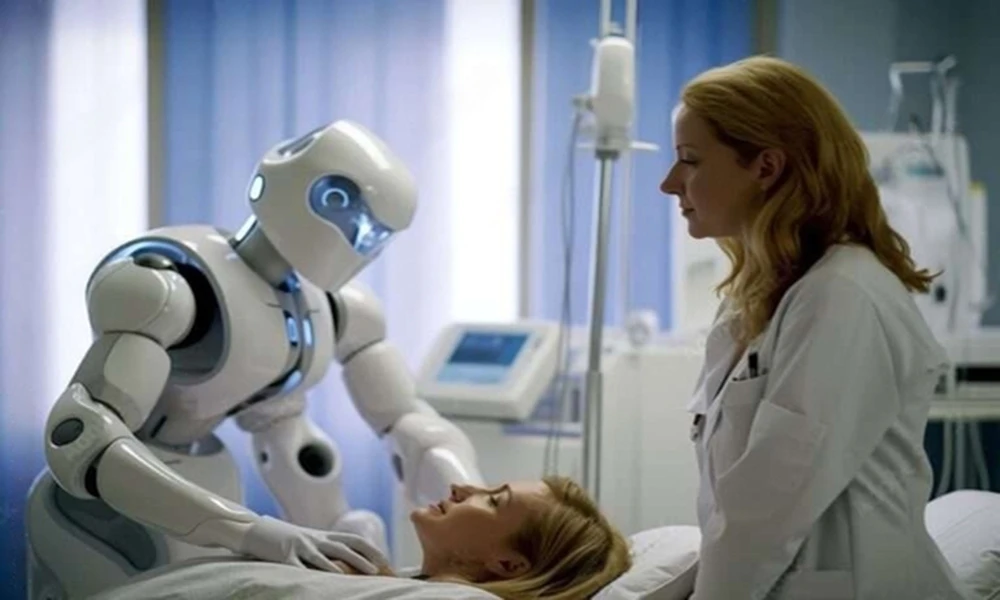Revolutionizing Care: The Rise of Robotics in Healthcare
Category: Smart Healthcare Technologies
In the era of technological advancement, robotics is transcending traditional boundaries and making a profound impact on the healthcare landscape. From precision surgeries to robotic-assisted rehabilitation, these intelligent machines are redefining patient care, improving outcomes, and augmenting the capabilities of healthcare professionals. This article explores the diverse applications of robotics in healthcare, delving into how these technological marvels are enhancing diagnostics, surgeries, patient assistance, and more.
1. Surgical Precision: Robotic-Assisted Surgery Leading the Way
- One of the most transformative applications of robotics in healthcare is robotic-assisted surgery. This section explores how robotic systems, controlled by skilled surgeons, offer unparalleled precision and control during procedures. From minimally invasive surgeries to complex interventions, robotic-assisted surgery reduces invasiveness, enhances accuracy, and shortens recovery times for patients.
2. Rehabilitation Robotics: Accelerating Recovery and Enhancing Mobility
- Robotics is playing a crucial role in rehabilitation, aiding patients in regaining mobility and functionality. This heading delves into how rehabilitation robots assist in physical therapy, providing repetitive and precise movements to aid recovery. Whether supporting stroke survivors or helping patients with neurological disorders, rehabilitation robotics accelerates the rehabilitation process, leading to improved outcomes.
3. Telepresence Robots: Breaking Geographical Barriers in Patient Care
- Telepresence robots are revolutionizing patient care by breaking geographical barriers and connecting healthcare professionals with patients remotely. This section explores how these robots enable virtual consultations, allowing specialists to reach patients in remote areas. Telepresence robots are particularly impactful in emergency situations and critical care, providing timely expertise regardless of physical distances.
4. AI-powered Robotic Diagnostics: Enhancing Imaging and Analysis
- Robotics, coupled with artificial intelligence (AI), is transforming diagnostics in healthcare. This heading delves into how AI-powered robotic systems analyze medical imaging data, aiding in early detection and accurate diagnosis. Robotic diagnostics not only improve the efficiency of healthcare professionals but also contribute to more precise and personalized treatment plans.
5. Robotic-Assisted Elderly Care: Improving Quality of Life
- Robotics is becoming a valuable asset in elderly care, addressing the challenges of an aging population. This section explores how robotic companions and assistive devices support the elderly in daily activities, monitor health parameters, and provide companionship. Robotic-assisted elderly care is not a replacement for human touch but a complement, enhancing the overall quality of life for seniors
CASE STUDIES
Case Study 1: da Vinci Surgical System - Revolutionizing Robotic-Assisted Surgery
Overview:
- The da Vinci Surgical System, developed by Intuitive Surgical, is a pioneer in robotic-assisted surgery and has been widely adopted globally.
Implementation:
- The da Vinci Surgical System utilizes robotic arms controlled by a surgeon console to perform minimally invasive surgeries. The robotic arms translate the surgeon’s hand movements into precise actions, enabling enhanced dexterity and visualization during procedures. Surgeons can perform complex surgeries with smaller incisions, reducing patient recovery times.
Results:
- The da Vinci Surgical System has demonstrated significant benefits in various surgical specialties, including urology, gynecology, and general surgery. The minimally invasive approach reduces the risk of complications, shortens hospital stays, and enhances overall patient outcomes. This case study illustrates how robotic-assisted surgery, exemplified by the da Vinci system, is transforming surgical practices globally.
Case Study 2: EksoGT - Advancing Rehabilitation Robotics
Overview:
- EksoGT is a wearable exoskeleton developed by Ekso Bionics, designed to assist individuals with lower extremity weakness or paralysis in their rehabilitation.
Implementation:
- EksoGT provides robotic-assisted gait training, enabling individuals with spinal cord injuries or neurological disorders to stand and walk. The exoskeleton offers customizable support, adapting to each patient’s specific needs. Healthcare professionals can use EksoGT in rehabilitation centers to enhance physical therapy and facilitate motor recovery.
Results:
- The implementation of EksoGT has shown promising results in improving mobility and functionality for patients undergoing rehabilitation. Users experience increased muscle strength, improved balance, and enhanced overall well-being. EksoGT showcases the potential of rehabilitation robotics in augmenting traditional therapy approaches, offering new possibilities for individuals with mobility challenges globally.

